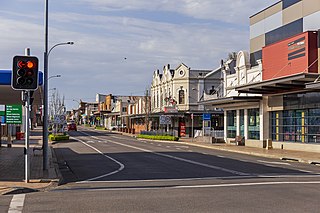
Cessnock is a city in the Hunter Valley of New South Wales, Australia, about 52 km (32 mi) by road west of Newcastle. It is the administrative centre of the City of Cessnock LGA and was named after an 1826 grant of land called Cessnock Estate, which was owned by John Campbell. The local area was once known as "The Coalfields", and it is the gateway city to the vineyards of the Hunter Valley, which includes Pokolbin, Mount View, Lovedale, Broke, Rothbury, and Branxton.

The Main North Line is a major railway in New South Wales, Australia. It runs through Strathfield to Armidale. The line is the main line between Sydney and Armidale. As of 1988, the line closed progressively north of Armidale with services gradually withdrawn till 2004, with the main route between Sydney and Brisbane now the North Coast line.

Singleton railway station is a heritage-listed railway station located on the Main Northern line in New South Wales, Australia. It serves the town of Singleton. It was added to the New South Wales State Heritage Register on 2 April 1999.

Lochinvar railway station is located on the Main Northern line in New South Wales, Australia. It serves the nearby town of Lochinvar opening on 2 July 1860.

Maitland railway station is located on the Main Northern line in New South Wales, Australia. It serves the city of Maitland opening on in 1880 as West Maitland being renamed Maitland on 1 April 1949. It is the junction station for the Main Northern and North Coast lines. It was added to the New South Wales State Heritage Register on 2 April 1999.

Beresfield railway station is located on the Main Northern line in New South Wales, Australia. It opened on 31 July 1925, serving the western Newcastle suburb of Beresfield.

Kurri Kurri is a small town in the Hunter Region of New South Wales, Australia, in the Cessnock LGA. At the 2016 census, its population was 6,044. Kurri Kurri is the largest town in a group of towns and hamlets, including Stanford Merthyr, Pelaw Main, Weston, Abermain and Heddon Greta, called Kurri Kurri – Weston by the ABS. Its estimated population was 17,241 at 2016 census.

Newcastle bus routes connect suburbs in and around Newcastle and Lake Macquarie, about 100 kilometres north of Sydney.
The railways of New South Wales, Australia, use a large variety of passenger and freight rolling stock. The first railway in Sydney was opened in 1855 between Sydney and Granville, now a suburb of Sydney but then a major agricultural centre. The railway formed the basis of the New South Wales Government Railways. Passenger and freight services were operated from the beginning. By 1880, there was a half hourly service to Homebush.

The Newcastle railway line is a branch railway line in the city of Newcastle, New South Wales, Australia. The line branches off the Main North line at Broadmeadow and travels in an easterly direction through the inner suburbs to Newcastle Interchange, with one intermediate station at Hamilton. Until its curtailment in December 2014, it extended to Newcastle station. NSW TrainLink operates electric passenger train services over this line as part of its Central Coast & Newcastle Line service, and diesel railcars to Maitland and beyond as part of the Hunter Line.
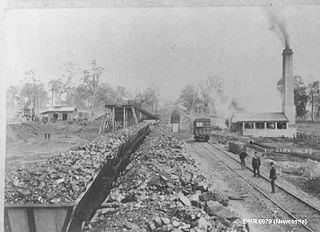
The South Maitland Railway was once an extensive network of privately owned colliery and passenger railway lines which served the South Maitland coalfields in the Hunter Region of New South Wales, Australia and were the second last system in Australia to use steam haulage, having used steam locomotives until 1983.

The Richmond Vale Railway was a 4 ft 8+1⁄2 in colliery railway line in the Hunter Valley of New South Wales, Australia, servicing coal mines at Minmi, Stockrington, Pelaw Main and Richmond Main. It was over 26 km (16 mi) long and passed through three tunnels, and was the last commercially operated railway in Australia to use steam locomotives.
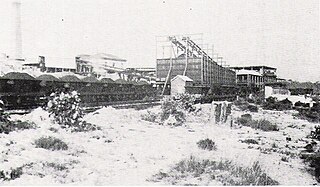
Pelaw Main is a hamlet a few kilometres south-west of Kurri Kurri, in the Hunter Region of New South Wales, Australia. It owes its origins entirely to the colliery there of the same name. It had a population of 1,027 in 2011
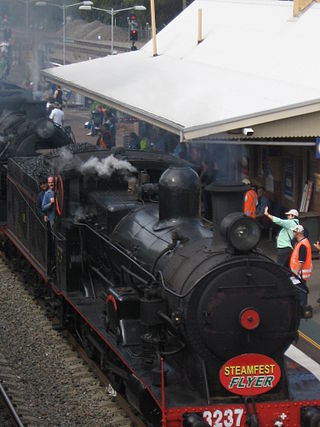
The Hunter Valley Steamfest is one of the major events in the New South Wales steam locomotive season and also one of the major events held in Maitland, in the Hunter Region. Held over two days in April, it is usually attended by steam locomotives from the Canberra Railway Museum, NSW Rail Museum and East Coast Heritage Rail and railmotors from the Rail Motor Society.

The Richmond Vale Railway Museum operates a railway and museum located at the heritage-listed Richmond Main Colliery south of Kurri Kurri, New South Wales. The museum is a volunteer non-profit organization, formed in 1979 with the aim of preserving the Richmond Vale railway line and the mining heritage of J & A Brown and the Hunter Valley.

Gillieston Heights is a suburb of the City of Maitland local government area in the Hunter Region of New South Wales, Australia, approximately 5.1 km (3.2 mi) from the Maitland CBD. Prior to 1967, the village was named East Greta however this was changed to honour former Maitland mayor and member of the New South Wales Legislative Assembly John Gillies following a poll of residents. At the 2021 census, Gillieston Heights had a population of 4,796.
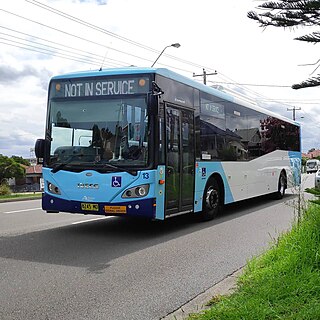
Rover Coaches is an Australian bus company operating services in the Hunter Valley. It is a subsidiary of Buslines Group.
Cliftleigh is a small suburb, and planned development in the City of Cessnock, New South Wales, Australia. It is 27.8 kilometres (17 mi) north-west from Newcastle, and 17 kilometres (11 mi) east-northeast from Cessnock.

The South Maitland Railways railcar was a class of diesel railcar built by Tulloch Limited for the South Maitland Railway (SMR) in 1961.
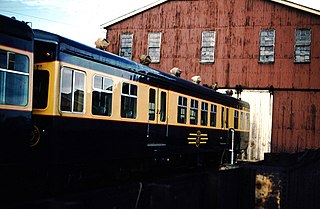
South Maitland Railway Workshops is a heritage-listed former railway workshops and now museum and industrial site at Junction Street, Telarah, New South Wales, Australia. It was added to the New South Wales State Heritage Register on 2 April 1999.



















